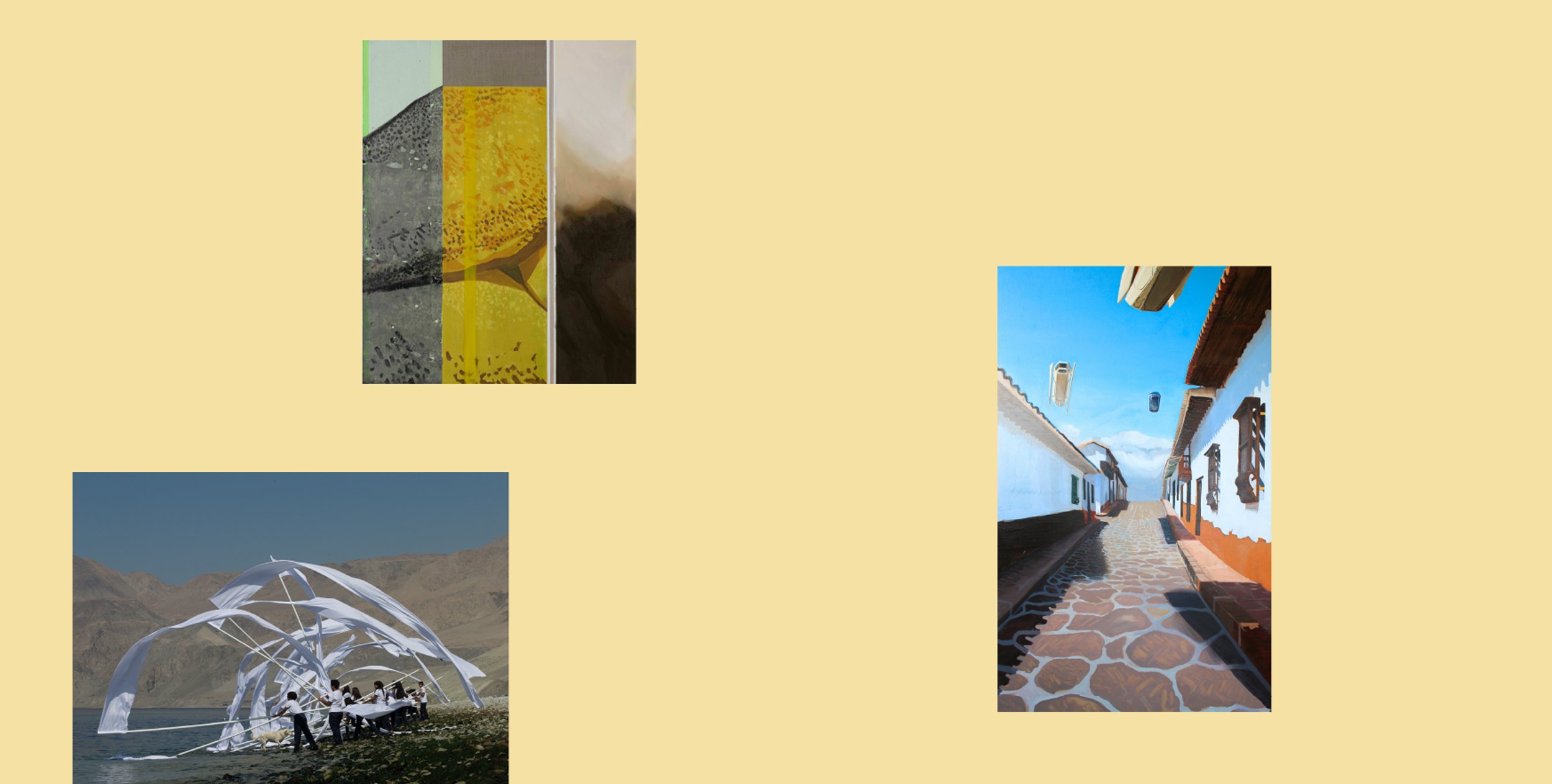
January
Baris
Gokturk
Baris Gokturk grew up during The Kurdish–Turkish conflict, an ongoing conflict between the Turkish Republic and insurgent groups. His unique visual language is crafted from a desire to see socio-political change and to harness the power and mutability of the image. Yet Gokturk is not a traditional painter. Rather he appropriates, transfers, layers, rubs, reduces, and sculpts images onto surfaces with a painterly approach. Using political, historical, and newsworthy imagery, he intuitively responds to their themes and aesthetics by adding to and reducing the surface. Through this process, artworks appear dense, dynamic, and present, yet also abstracted, ghostly and fleeting. Individual and collective stories merge on large cascading tapestries and on objects layered in photo transfers to form what Gokturk describes as an “archeological network of contemporary culture.”
In Istanbul, on his walk to school, Gokturk witnessed women protestors holding up photos of their sons missing due to the conflict. As years passed the women aged yet the photos of their loved ones remained static. To capture this protest ritual and the idea of time’s passing, Gokturk created Saturday (2018), an accumulative portrait of these women that preserved their action. Through layering, individuals are partially visible representing memories fading through time, yet collectively appear dense and powerful. The paradox of imagery disappearing in collectivity to together become more visible—united against the body politic—is at the heart of Gokturk’s practice.
Gokturk lived in Puerto Rico before moving to New York where he has resided for over two decades. All Saints (2021), is a collage of New York City street-dancers performing at block parties held in 2020 during the pandemic. The closeness of bodies is complicated by a time when breathing, physical contact and sociability are high stakes. Just as oil paint has historically been activated to figuratively paint flesh, Gokturk uses image transfers as a metaphorical skin to depict his figures. Adhering this flexible skin to the surface, Gokturk displaces and allows the image to form freely. This 28-foot tapestry is interwoven with flames and landscapes appearing translucent and fragile yet compact and commanding.
Gokturk used his time at Fountainhead Residency for research, garnering stories from individuals of various cultures and immigrant experiences as inspiration for his solo exhibition in Istanbul. Miami provided Gokturk with an ideal visual archive for future works.
–Claire Breukel
Baris Gokturk’s residency was generously sponsored by Shepard Broad Foundation.
I, Ever (2023); Ink, acrylic, and oil on linen.

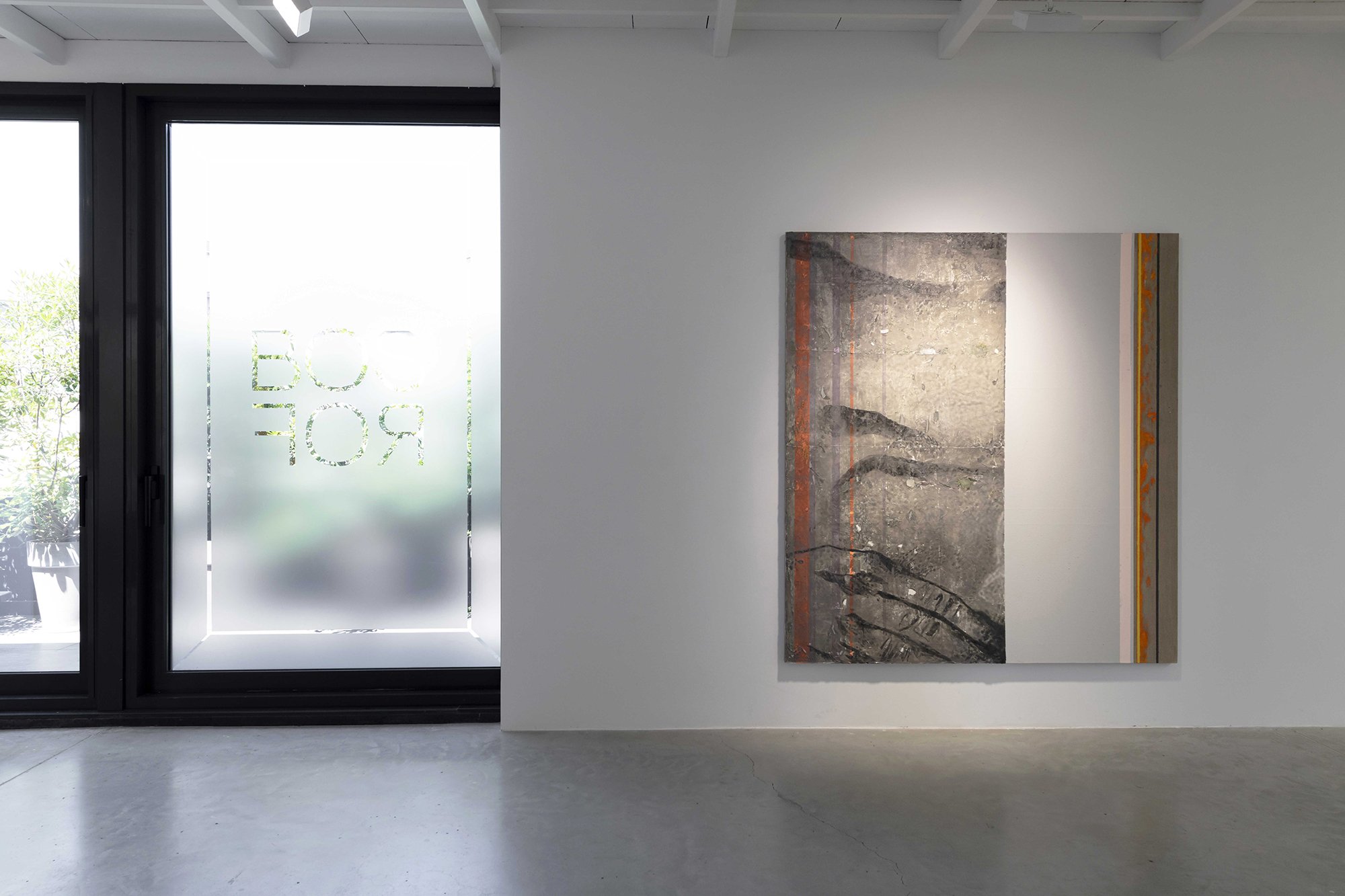


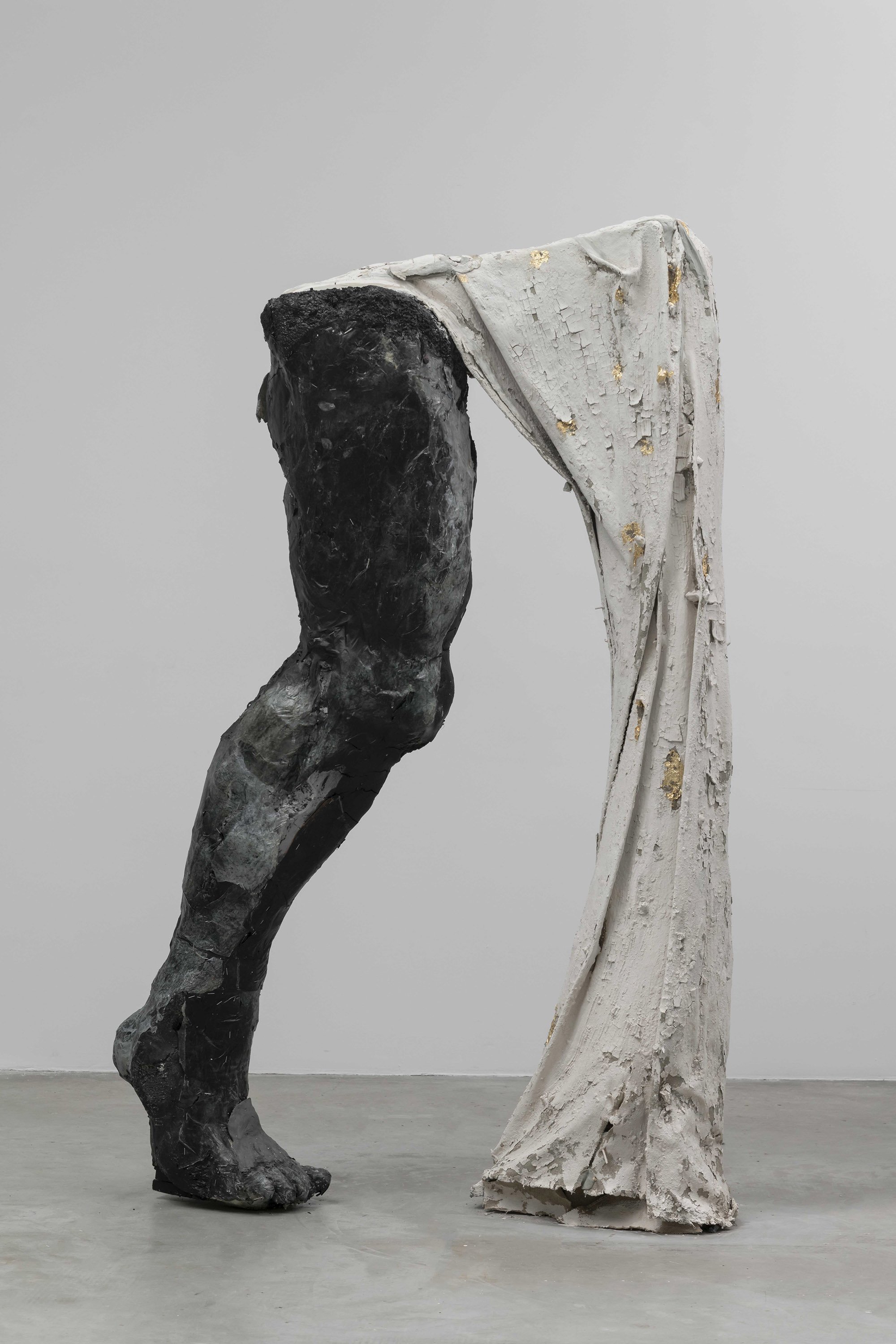


Clockwise from top left: Touch (2023); ink, acrylic and oil on linen. An installation view of Gokturk’s exhibition at Galeri Bosfer in Istanbul. Gokturk in the studio at Fountainhead Residency, photographed by Francesca Nabors. All Saints (2021), image transfer, polymer, ink, acrylic, netting. A view of the sculptural and mixed-media works on view at Bosfer. Scanner I (2023); mixed media. Gokturk applying his self-described ‘skins’ - a photo transfer process that strips down the image’s material to a transferable layer of film - to a work in progress at Fountainhead.
Juan Jose Cielo
Born in Medellin and raised in Miami, Juan Jose Cielo adopted these respective cities’ histories, landscapes, and modes of social interaction, embracing a hybrid identity inherent to many immigrant experiences. Growing up he learned irony and satire from his comedian father. He studied at the New World School of the Arts in Miami, The Beaux-Arts in Paris, and Cooper Union in New York. Using these experiences as inspiration, Cielo’s artwork is motivated by melding “in-between” people and places with his own imagined realities. The result is paintings and short films inspired as much from Cielo’s immigrant experiences and everyday societal observations as from found imagery depicting space and technology.
Although Cielo has had a lifelong interest in space, his participation in the Mars Desert Research Station residency allowed him to use high speed cameras that simulated running in gravity. He also illuminated mountains and built a runway in the desert for ships. This experience cemented his obsession with the celestial. As an undefined, boundless, and borderless terrain—in antithesis of the constructs of a country or continent—space is an unencumbered and democratic place of infinite possibility. This openness, combined with the fragmenting and remastering of cultures he witnessed through migration, inspired Cielo to create eclectic scenes that conflate influences and eras and act as imaginative simulations for aspirations and dreams.
Functioning like a theatre stage, Cielo’s painting Cartas de amor (Love Letters) (2022) depicts an astronaut wearing a spacesuit covered in family portraits—uniting contradictory ideas of exploration and home, and public and private space. In his short film Eclipse Solar (2019), fact and epic predictions are centerstage. Driving through his father’s hometown of Marinilla in Colombia, Cielo had his father announce an eclipse happening seven years in the future from a public announcement system. Bringing space to daily life, the gap between this present-day public proclamation and the future celestial prophecy is peculiar, yet also unnervingly true.
Cielo emigrated to Miami when he was four years old, left to study and returned to the growing city for the 2023 Fountainhead Residency. Here, Cielo saw the opportunity to relate his concepts of hybridity within a community that has eclectic cultures and experiences. Cielo continued developing ideas combining science fiction and locality, and daily life and the imaginary, to show a more nuanced reality of lived experiences.
–Claire Breukel
Juan Jose Cielo’s residency was generously sponsored by Shepard Broad Foundation
and carried out in partnership with YoungArts.
We will someday be the ancients (2023); oil on canvas.



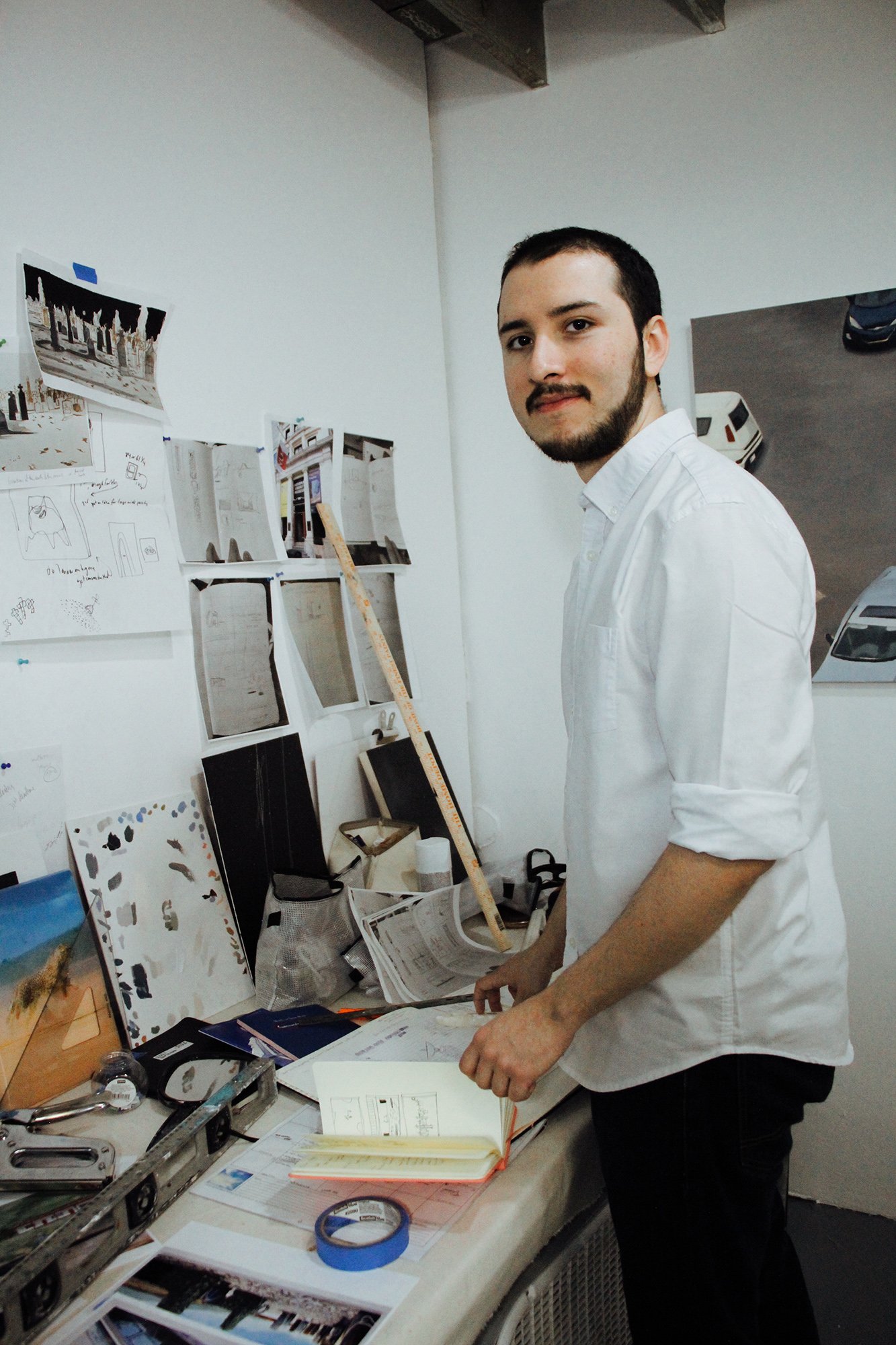

From left to right: Shadows of flying cars (2023); oil on canvas. Cielo’s paintings often blend images from memory with futuristic elements, such as the work in progress he’s completing here at Fountainhead Residency. El camino que hay que recorrer (the path you must travel) (2023); oil on canvas. Cielo in the studio at Fountainhead Residency, photographed by Francesca Nabors. Yo no soy marinero, soy capitan (I am not a sailor I am a captain) (2022); oil on canvas.
Miguel
Braceli
Education is at the heart of Miguel Braceli’s collaborative and boundary-blurring practice. The Central University of Venezuela campus, where Braceli studied Architectural Design, readily integrates art and architecture. It reflects Caracas, a city once invested in public art and architecture, with artists such as Alejandro Otero and Gego providing the backdrop for Braceli’s creative evolution. It is appropriate that art and performance grew from Braceli’s architecture teachings. He and his students developed creative solutions to activate public spaces— experimenting until the human body, and its ability to perform in situ, became a central medium of expression. Taking inspiration from Latin American art collectives, and the performances and interventions of artists such as Lygia Clark and Diego Barboza, Braceli began creating moments and spaces for exchange. Using poetic gestures of movement in public space and highlighting the transformative possibilities of education Braceli responds to his home country’s socio-political and economic crisis.
In 2018, Braceli won a Fulbright scholarship and relocated to the United States to attend the Maryland Institute College of Art. Today, as an artist living in New York, Braceli collaborates with educational institutions to instigate social activations. Here Lies a Flag (2021) is a site-responsive artwork in collaboration with New Rochelle High School students. Performed on a green field, Braceli gave expansive lengths of white fabric to students to collectively reshape using their bodies before ceremoniously burying it. Braceli uses this soft intervention to question concepts of borders, migration and belonging. The action’s impermanence embraced chance, existing long-term as photo and video documentation. In 2021, Braceli also cofounded artist-run platform LA ESCUELA with international non-profit Siemens Stiftung. Focused on Latin America and its diaspora, the platform is predicated on the concept of radical learning, offering alternative systems and content through workshops, readings, and talks, and facilitating experimental community-based projects.
In 2023, during his Foundation Residency, Braceli began research for a participatory project to develop Miami’s water infrastructures. An architectural system “of survival,” Braceli aims to use the city’s complex relationship with water—as a resource and impending flood threat—to address gentrification, displacement, and migration within the greater “Latinx” experience. Further advancing his practice, Braceli also began activating the material used in past performances to create paintings, drawings, and sculptures, to serve as descriptors of collective actions. Commissioned by the NYC Percent for Art Program, Braceli is developing a public artwork for the Staten Island Tompkinsville pier, which will give his ordinarily ephemeral artwork, permanence.
–Claire Breukel
Miguel Braceli’s residency was generously sponsored by Shepard Broad Foundation.
Installation view of 2018’s 1:1: Thinking with the Body, an exhibition by Miguel Braceli at Espacio Monitor in Caracas, Venezuela. Photo by Julio Osorio.


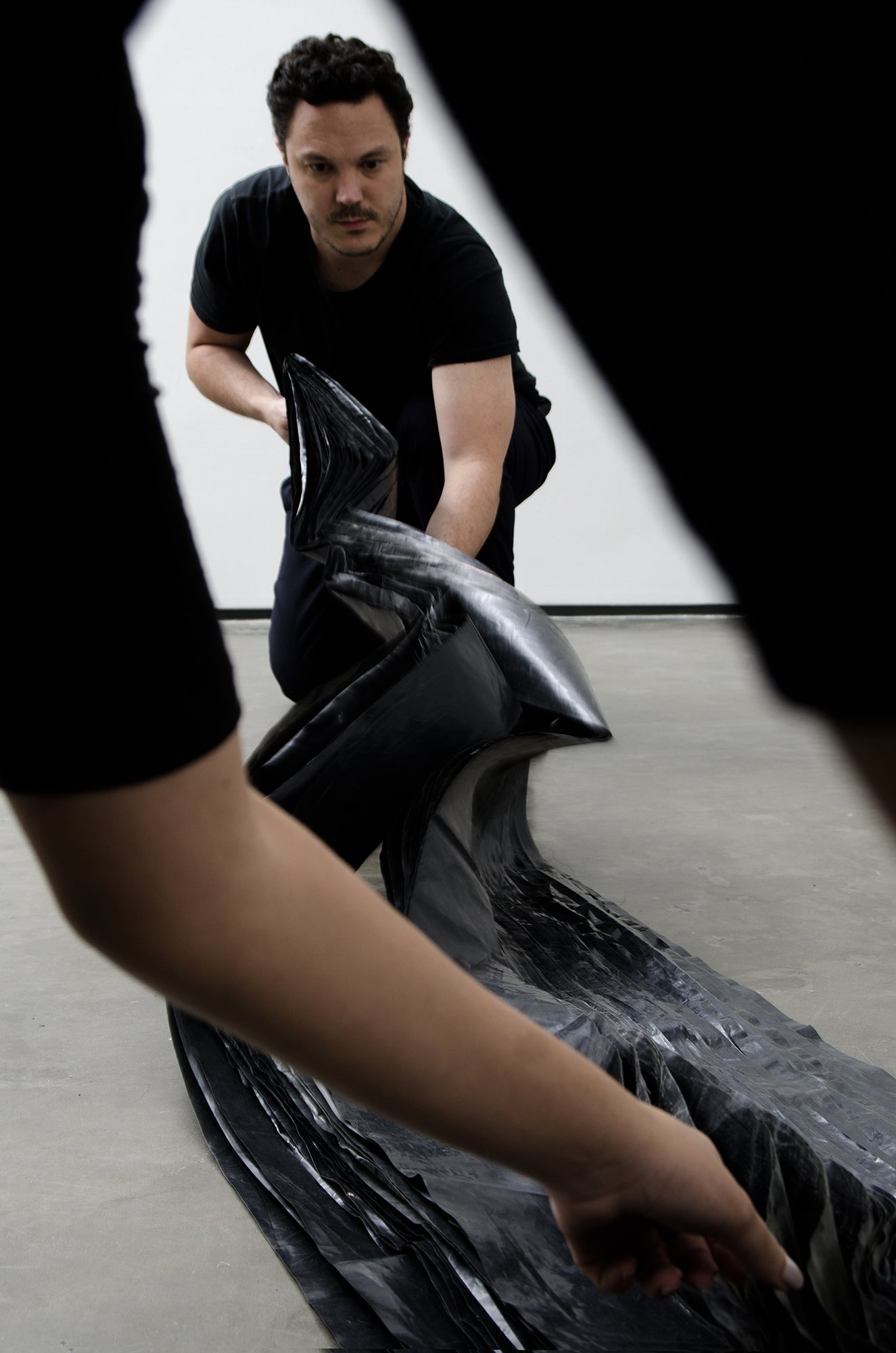


Clockwise from left: Film still from Monumentos Horizontales (2020), a participatory performance completed in collaboration with art and architecture students from Espacios Revelados in Guadalajara, México. Video installation still from Irazu (2018) exhibited at Espacio Monitor in Caracas, Venezuela, photographed by Julio Osorio. Miguel Braceli experiments with a new direction at Fountainhead Residency, photographed by Francesca Nabors. Still from Enterrar las banderas en el mar (2019), a participatory performance in collaboration with Juan José Latorre Benavente High School students in Mejillones, Chile; this work was shown at the Bienal SACO in Chile. A portrait of Miguel Braceli by Julio Osorio.



